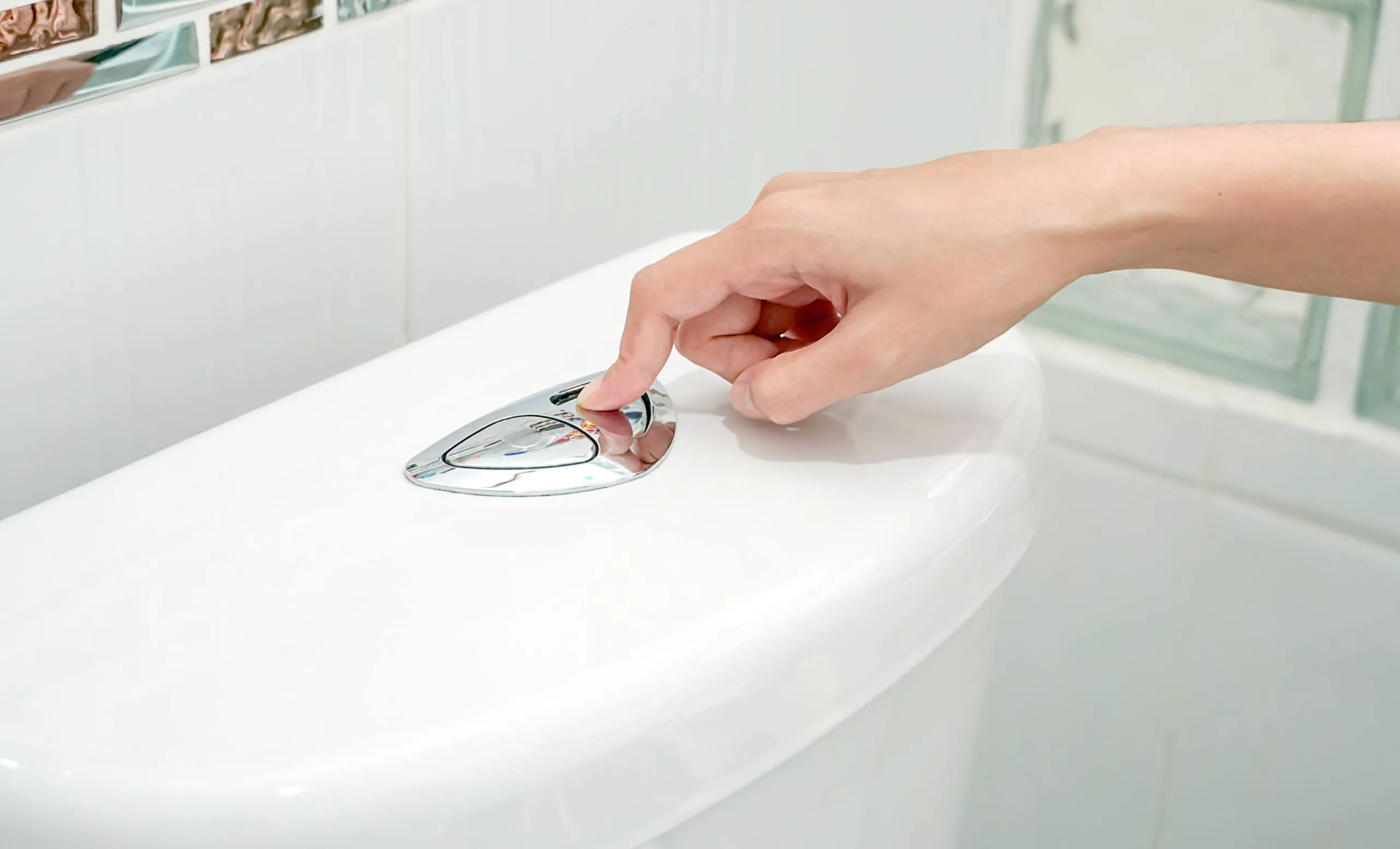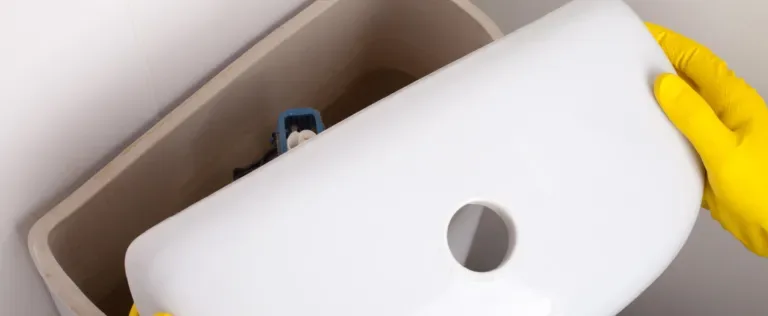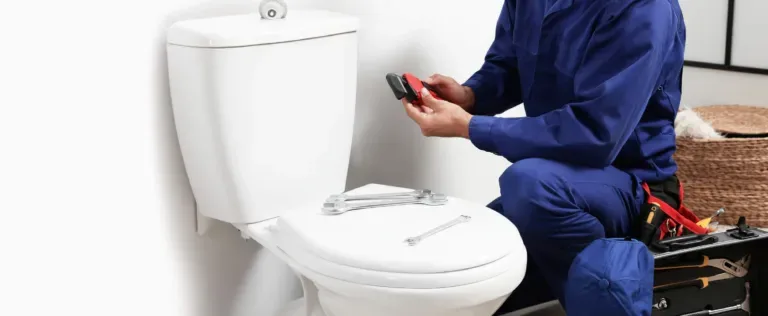Why Does My Toilet Keep Running? Causes & Solutions

Why Does My Toilet Keep Running? Causes & Solutions
Picture this: you've just used the toilet, flushed it, and walked away, expecting everything to be back to normal. But wait – you can still hear those faint, persistent sounds of water trickling into the bowl. Your toilet won't stop running, and it's not just an annoyance; it's a plumbing problem that demands immediate attention.
In this article, we'll delve into the common issue of a running toilet, exploring the causes behind it and providing practical solutions. We'll guide you through the steps of toilet repairs, ensuring that this pesky problem doesn't continue to haunt your bathroom. Because when it comes to a running toilet, timely action is key to preserving both your peace of mind and your water bill.
What Is A Running Toilet?
A running toilet is when water keeps flowing into the toilet bowl after you've flushed, refusing to stop. It's like a leaking tap, but it's happening inside your toilet tank. This seemingly small problem can have significant consequences.
When your toilet won't stop running, it means water is continuously flowing down the drain. In some cases, it can result in hundreds of litres of water being flushing away every day. This isn't just environmentally unfriendly; it can also lead to increased water bills that can quickly add up.
Causes Of A Running Toilet
Flapper Valve Problems
One of the most common culprits behind a running toilet is a misbehaving flapper valve. This little rubber stopper is responsible for sealing the water in the tank. When it wears out or gets misaligned, water can trickle into the bowl, leading to the constant running.
Fill Valve Issues
A faulty fill valve can also be to blame for your toilet's stubborn insistence on running. If the fill valve doesn't shut off properly, it allows an excessive amount of water to enter the tank. This can result in the water level exceeding its intended mark, causing your toilet to run.

Float Ball/Bulb Troubles
The float ball or float bulb inside your toilet tanks plays a crucial role in regulating the water level. If it's damaged or improperly adjusted, it can lead to a continuous flow of water.
Chain Or Flush Lever Malfunctions
Sometimes, the problem lies in the chain or flush lever mechanism. A tangled chain or a malfunctioning flush lever can keep the flapper valve open, causing water to continuously flow into the bowl.
Mineral Buildup In The Tank
Over time, minerals from your water supply can accumulate in the tank, affecting the functioning of various components. These deposits can hinder the proper sealing of the flapper valve or interfere with the float's movement.
Diagnosing The Problem
Before diving into the nitty-gritty of toilet repairs, it's essential to start with a visual inspection. Here's how to get started:
- Remove The Toilet Tank Lid: Gently lift off the tank lid, setting it aside in a safe spot.
- Observe The Flush Mechanism: Take a close look at the inside of the tank. You'll notice a series of components, including the flush mechanism.
- Check The Flapper: The flapper is a rubber or plastic piece that seals the flush valve. If it's partially open or damaged, it could be the culprit behind the running toilet.
- Inspect The Float: The float is a buoyant device that regulates the water level in the tank. Ensure it's not stuck or damaged.
How To Fix A Running Toilet
Flapper Valve Replacement
A worn-out flapper valve is often the culprit behind a running toilet. First, turn off the water supply to the toilet. Flush to empty the tank. Remove the old flapper valve by detaching it from the flush level. Replace it with a new one, ensuring a secure fit.
When selecting a replacement flapper valve, make sure it's compatible with your toilet model. An ill-fitting part may lead to further issues.
Adjusting The Fill Valve
If your toilet doesn't stop running, adjusting the fill valve can do the trick. Locate the fill valve, typically on the left side of the tank. Turn the adjustment screw clockwise to decrease the water level or counterclockwise to increase it until the water reaches the recommended level marked inside the tank.
Adjusting the water level to the correct height is essential to prevent continuous running. A too-high water level can result in an overflow, while a too-low level may lead to insufficient flushing.

Fixing Float Ball/Bulb Issues
To tackle this issue, examine the float ball or bulb in the toilet tank. If it's damaged or misaligned, it can cause continuous running. Adjust or replace it as needed to ensure it rises and falls properly with the water level.
Positioning is everything when it comes to float balls or bulbs. Ensure they move freely without any obstructions. A properly positioned float mechanism prevents unnecessary water flow.
Resolving Chain Or Flush Lever Problems
Sometimes, it's the little things like chains and flush levers that can cause a running toilet. Inspect the chain or flush lever in the tank. They may become tangled or misaligned, leading to constant running. Realign, untangle, or replace them as necessary to ensure a smooth flush.
Keep in mind that these components can wear out over time. Regular maintenance and occasional replacements can save you from future toilet repairs.
Dealing With Mineral Buildup
If mineral deposits are causing your toilet to run, it's time for some cleaning. Use a gentle cleaner or vinegar to dissolve the buildup. A scrub with a toilet brush should do the trick.
To prevent future mineral buildup, consider regular maintenance. A periodic cleaning routine can help keep your toilet running smoothly.
Seek Professional Toilet Repairs Today!
Understanding why your toilet keeps running is not just about convenience; it's about responsible water usage and saving on your monthly bills. By taking action now, you can make a significant impact on both fronts.
Toilet repairs are often simpler than they seem, and it's our mission at GRH Plumbing Group to assist you with these issues. Our experienced plumbers specialise in swift, effective solutions to get your toilet functioning as it should. By reaching out to our team of experts, you not only conserve water but also save money in the long run.
So, don't hesitate any longer. Whether you require toilet plumbing services in the Inner West or plumbing services across Sydney CBD, ensure you take the first step toward water conservation and lower water bills by seeking professional toilet repairs today. Contact our plumbers at GRH Plumbing Group, and we'll ensure your toilet operates efficiently, benefitting both your wallet and the environment.